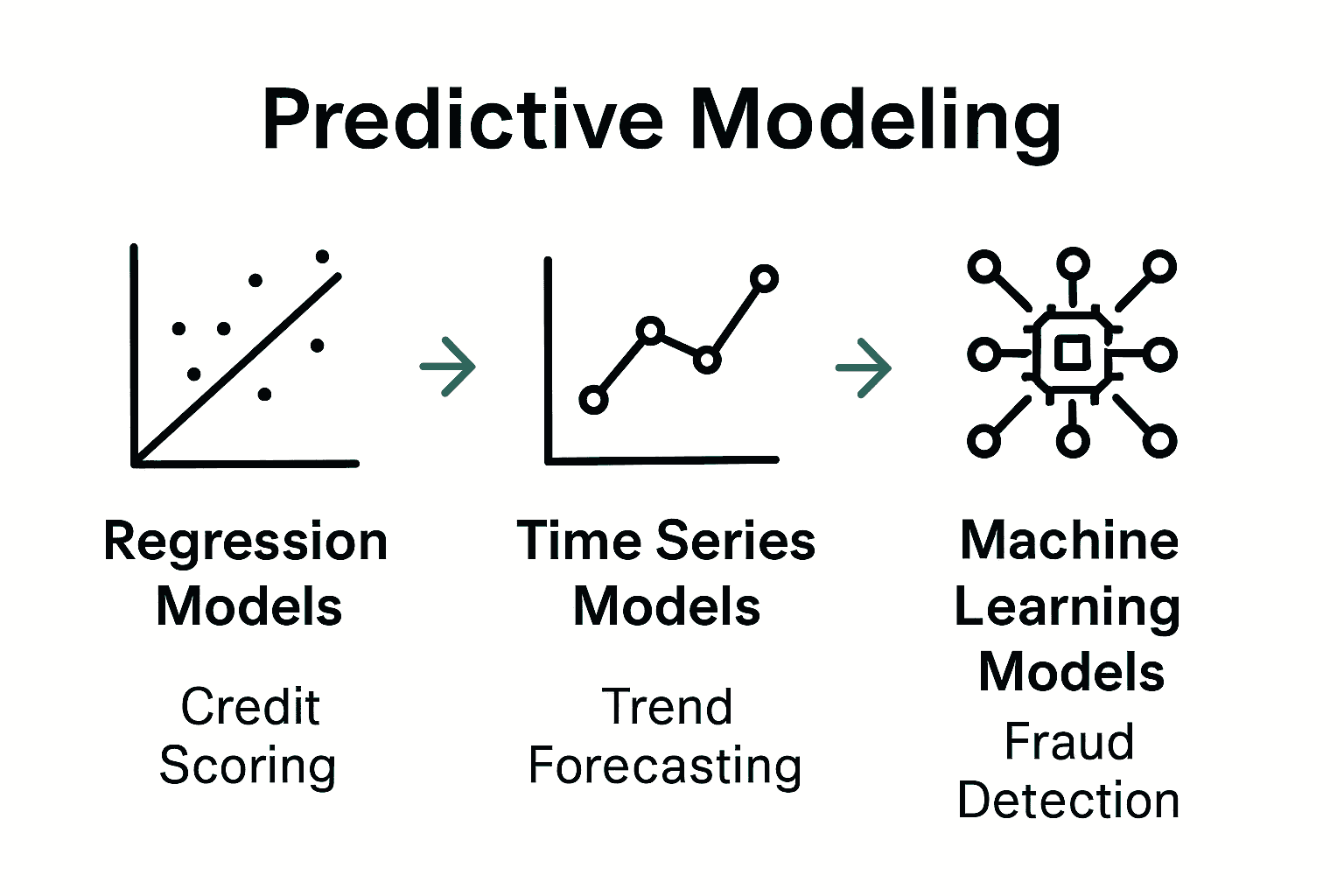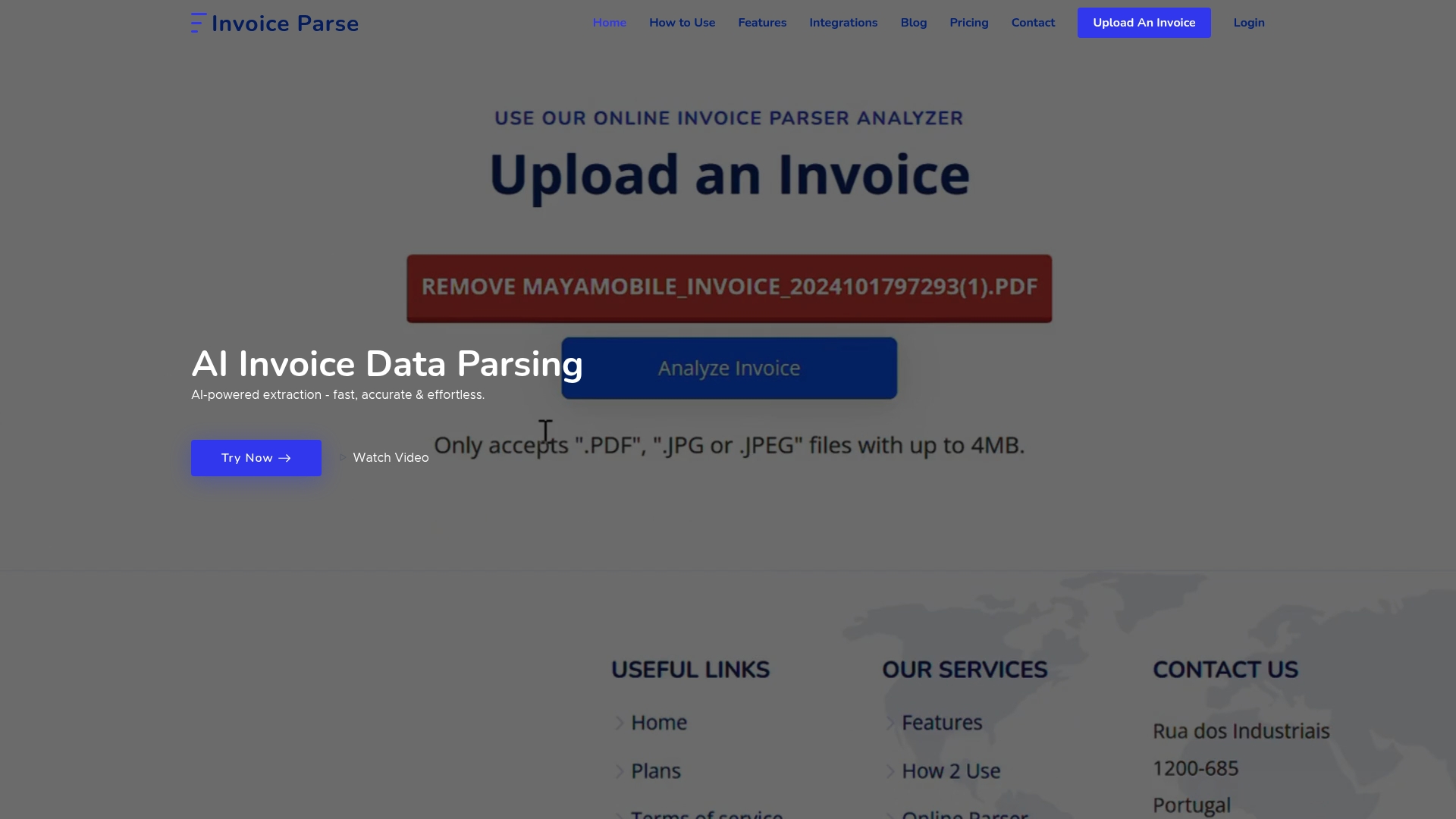Did you know that over 80 percent of financial institutions use predictive analytics to shape their strategies? Staying one step ahead in finance is tougher than ever, with markets evolving at breakneck speed. Predictive analytics helps organizations spot trends, manage risks, and make smarter decisions using the power of data and machine learning. Understanding these tools means tapping into clearer forecasts, sharper investments, and greater confidence in every financial move.

Complete Guide to Predictive Analytics in Finance
Key Takeaways
| Point | Details |
|---|---|
| Predictive Analytics Power | Transforms raw financial data into insights, enabling organizations to forecast trends and assess risks effectively. |
| Model Types | Key model types include regression, time series, and machine learning, each serving distinct analytical purposes. |
| Implementation Benefits | Offers advantages like proactive risk management, enhanced forecasting, and competitive edge in decision-making. |
| Challenges and Risks | Organizations face data quality issues and regulatory constraints, necessitating strong data governance and ethical considerations. |
Table of Contents
- Defining Predictive Analytics In Finance
- Types Of Predictive Models For Finance
- How Predictive Analytics Works In Practice
- Key Applications In Financial Operations
- Benefits And Challenges For Businesses
- Risks, Limitations, And Best Practices
Defining Predictive Analytics in Finance
Predictive analytics represents a sophisticated approach to financial forecasting that transforms raw data into actionable insights. According to Wikipedia, it encompasses statistical techniques like data mining, predictive modeling, and machine learning designed to analyze historical and current data for anticipating future events.
In the financial landscape, predictive analytics serves as a powerful decision-making tool. As research from Heflo indicates, these advanced techniques allow organizations to:
- Forecast market trends with remarkable precision
- Evaluate potential financial risks proactively
- Optimize investment strategies dynamically
- Support data-driven decision-making processes
The core mechanism of predictive analytics involves complex algorithms that exploit intricate patterns within transactional and historical financial datasets. By leveraging machine learning models, financial professionals can now assess potential scenarios with unprecedented accuracy. Read more about machine learning in finance to understand how these technologies are transforming traditional financial analysis.
Ultimately, predictive analytics transforms raw financial data into strategic intelligence, enabling businesses to anticipate market movements, understand customer behavior, and make informed choices in an increasingly complex economic environment. By converting historical information into predictive insights, organizations can stay several steps ahead in their financial planning and risk management strategies.
Types of Predictive Models for Finance
Predictive analytics in finance leverages various sophisticated mathematical models to transform complex financial data into actionable forecasts. According to Explo’s research, these models can be categorized into several key types, each serving unique analytical purposes.
Regression Models
Regression techniques are fundamental in financial predictive analytics. These models come in two primary variations:
- Linear Regression: Used for forecasting continuous values like stock prices
- Logistic Regression: Employed for classification tasks such as credit risk assessment
Time Series Models
Designed to analyze data points collected over time, these models excel at predicting financial trends. Notable examples include:
- ARIMA (Autoregressive Integrated Moving Average)
- Exponential Smoothing: Particularly effective for forecasting interest rates and understanding seasonal financial patterns
Machine Learning Models
As Wikipedia highlights, machine learning represents the cutting edge of predictive analytics. These advanced algorithms can handle incredibly complex financial datasets:
- Random Forests: Exceptional for fraud detection
- Gradient Boosting Machines: Used in credit scoring evaluations
- Neural Networks: Deployed in algorithmic trading strategies
Explore our guide on understanding machine learning in finance to dive deeper into how these sophisticated models transform financial analysis and decision-making processes.
Here’s a comparison of common predictive modeling approaches used in finance:

| Model Type | Main Use Case | Key Techniques |
|---|---|---|
| Regression Models | Forecasting values Credit scoring |
Linear Regression Logistic Regression |
| Time Series | Trend analysis Market forecasting |
ARIMA Exponential Smoothing |
| Machine Learning | Fraud detection Risk & trading |
Random Forests Gradient Boosting Neural Networks |
How Predictive Analytics Works in Practice
Predictive analytics transforms raw financial data into strategic forecasts through a sophisticated process of pattern recognition and statistical inference. Wikipedia explains that the core mechanism involves capturing relationships between historical data points to predict future events or unseen outcomes.
Data Processing and Pattern Identification
The practical implementation involves several critical steps:
- Collecting comprehensive historical financial datasets
- Identifying statistically significant correlations and patterns
- Building mathematical models that can generalize these insights
- Applying these models to new, incoming data for real-time predictions
Practical Application Strategies
According to research from Netscribes, successful implementation requires a holistic approach integrating three key dimensions:
- People: Developing data literacy and analytics competencies
- Process: Embedding predictive insights into critical workflows
- Technology: Ensuring robust infrastructure to support data-driven decision making
Workflow Integration
Financial teams leverage predictive analytics across multiple domains:
- Risk management assessments
- Fraud detection mechanisms
- Pricing optimization strategies
- Budget forecasting and allocation
Learn more about big data applications in accounting to understand how advanced analytics are reshaping financial intelligence. By transforming complex datasets into actionable insights, predictive analytics empowers organizations to anticipate challenges, optimize strategies, and make more informed financial decisions.
Key Applications in Financial Operations
Predictive analytics has revolutionized financial operations by transforming raw data into strategic insights across multiple critical domains. According to Panintelligence, the technology offers powerful applications that enable organizations to make more informed, proactive decisions.
Risk Management
Risk assessment stands at the forefront of predictive analytics applications. Financial institutions can now:
- Develop comprehensive client risk profiles
- Predict precise default probabilities
- Evaluate potential credit risks with unprecedented accuracy
- Implement preemptive risk mitigation strategies
Customer Intelligence
Predictive models unlock sophisticated customer relationship management techniques:
- Tailoring personalized financial product offerings
- Identifying customers at risk of churning
- Designing targeted marketing campaigns
- Enhancing customer retention strategies
Fraud Prevention
By analyzing transactional patterns, predictive analytics enables real-time fraud detection:
- Identifying anomalous financial transactions
- Flagging potential fraudulent activities instantly
- Reducing financial losses through early intervention
- Creating adaptive security mechanisms
Explore digital transformation strategies in finance to understand how these advanced analytical techniques are reshaping financial operations. Predictive analytics isn’t just a technological tool—it’s a strategic advantage that empowers organizations to anticipate challenges, optimize resources, and make data-driven decisions with confidence.

Benefits and Challenges for Businesses
Predictive analytics represents a transformative technology for modern businesses, offering remarkable opportunities alongside nuanced implementation challenges. According to research from RTS Labs, organizations can unlock substantial strategic advantages through intelligent data utilization.
Strategic Benefits
Businesses leveraging predictive analytics experience multiple compelling advantages:
- Proactive Risk Management: Early detection of potential financial risks
- Enhanced Forecasting: Real-time recalibration of predictive models
- Operational Efficiency: Reducing costs through intelligent automation
- Competitive Advantage: Gaining agility in capital planning and strategic decision-making
Implementation Challenges
Varenyaz highlights critical obstacles organizations must navigate:
- Ensuring high-quality, reliable data infrastructure
- Managing complex predictive model interpretability
- Preventing statistical model overfitting
- Maintaining strict regulatory compliance
- Addressing talent gaps in advanced data science skills
- Integrating with legacy technological systems
Navigating the Complexity
Successful predictive analytics implementation requires a holistic approach that balances technological capability with strategic vision. Organizations must invest not just in tools, but in building a data-literate culture that can effectively interpret and act on sophisticated analytical insights.
Explore digital transformation strategies in finance to understand how businesses can successfully integrate these powerful analytical techniques into their operational frameworks.
Risks, Limitations, and Best Practices
Predictive analytics in finance is not a silver bullet, but a sophisticated tool with inherent complexities. Panintelligence reveals critical limitations organizations must thoughtfully navigate to maximize analytical potential.
Key Limitations
Financial predictive analytics faces several significant challenges:
- Data Quality: Inconsistent or incomplete datasets undermining model accuracy
- Market Complexity: Intricate financial ecosystems resistant to straightforward modeling
- Talent Shortage: Limited availability of advanced data science professionals
- Regulatory Constraints: Stringent compliance requirements like GDPR
Strategic Risk Mitigation
According to Meegle’s research, organizations can implement best practices to address these limitations:
- Develop robust data governance frameworks
- Simplify predictive models for enhanced interpretability
- Provide comprehensive stakeholder training
- Establish ethical policies managing potential bias
- Create scalable integration strategies using APIs and cloud technologies
Ethical Considerations
Successful predictive analytics demands more than technical proficiency. Organizations must cultivate a holistic approach that balances technological capability with ethical responsibility, ensuring fair and transparent data utilization.
Learn more about managing business cash flow to understand how strategic data management intersects with financial operational excellence. The future of financial analytics lies not just in sophisticated algorithms, but in responsible, intelligent implementation.
Take Predictive Analytics in Finance Further With Automated Invoice Data Extraction
Predictive analytics in finance relies on the accuracy and availability of your data. As the article emphasizes, financial forecasting, risk management, and strategic insights all depend on transforming raw information into reliable, structured intelligence. If your team still struggles with hours of manual invoice data entry or inconsistent document processing, you are not only wasting time but also introducing errors into your predictive models.

Ready to make your financial data work smarter for you? Invoice Parse instantly transforms your invoices into clean, structured records without manual setup. Automate the extraction of vendor details, totals, dates, and line items for seamless reporting and analytics. Connect your workflows to real-time, API-enabled data that feeds directly into your forecasting and reporting tools. Explore the easiest way to power up your predictive analytics with reliable invoice intelligence—see how Invoice Parse helps financial professionals stay ahead of the competition.
Invest in precision and speed for your finance team today. Learn more and get started at Invoice Parse.
Frequently Asked Questions
What is predictive analytics in finance?
Predictive analytics in finance refers to the use of statistical techniques and machine learning to analyze historical and current financial data to forecast future events. It helps organizations make informed decisions by transforming raw data into actionable insights.
What are the key applications of predictive analytics in finance?
Key applications include risk management, customer intelligence, fraud prevention, and operational forecasting. These applications enable financial institutions to assess risks, personalize services, detect fraudulent activities, and optimize resource allocation.
What types of predictive models are commonly used in finance?
Common predictive models in finance include regression models (linear and logistic), time series models (ARIMA and exponential smoothing), and machine learning models (random forests, gradient boosting, and neural networks). Each model serves unique analytical purposes, from forecasting trends to detecting fraud.
What are the main challenges of implementing predictive analytics in finance?
Challenges include ensuring data quality, managing the complexity of financial markets, addressing talent shortages in data science, and adhering to regulatory compliance. Organizations need to develop effective strategies to navigate these obstacles for successful implementation.
